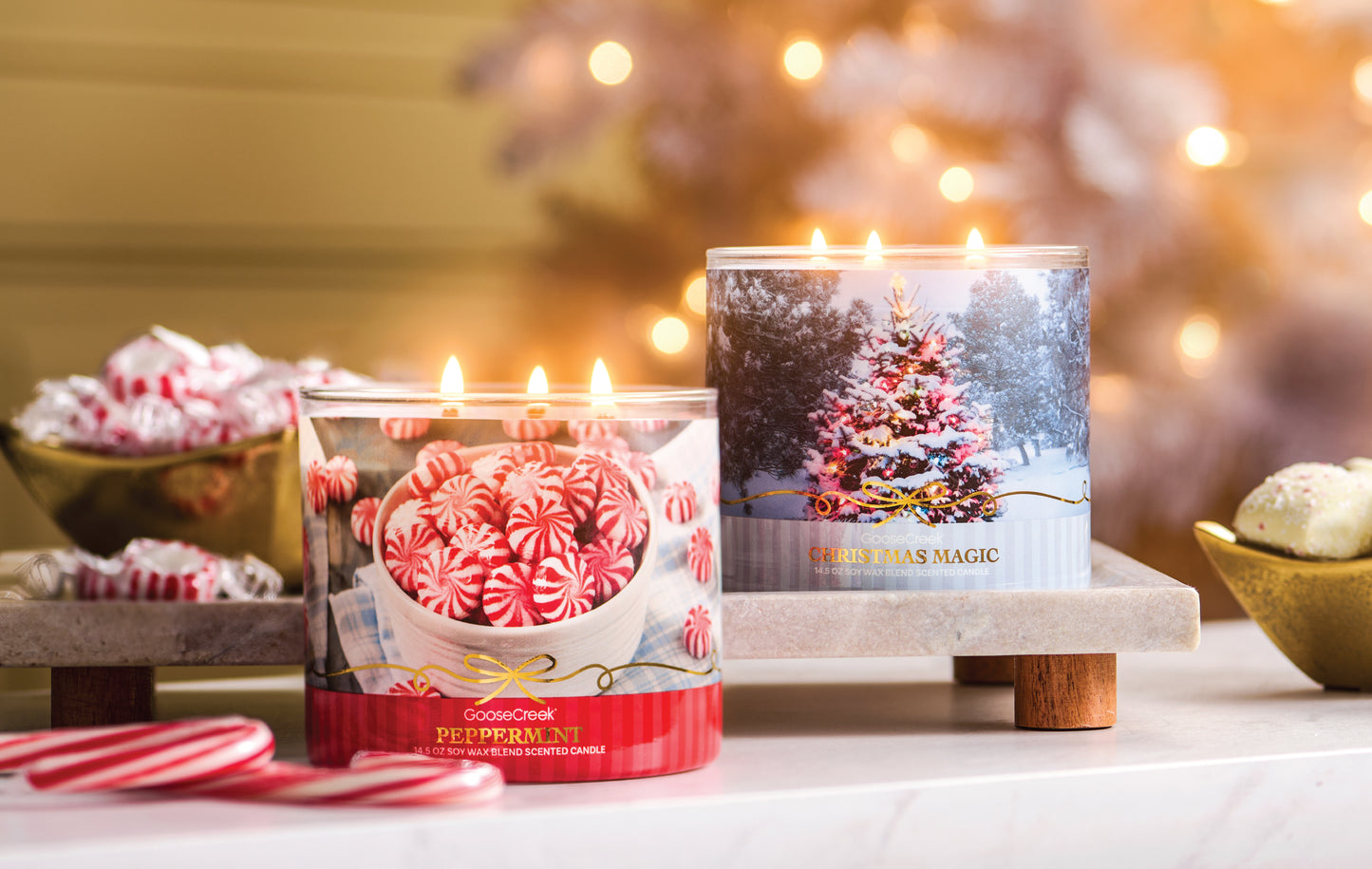
The History of the Candle: Centuries of Light
When Were Candles Invented?
According to the National Candle Association (NCA), the Romans are credited with developing wicked candles sometime before 3,000 B.C. They created these candles by dipping rolled papyrus paper in melted beeswax, using them for practical purposes such as lighting pathways and interiors of homes, as well as ceremonial, celebratory and religious purposes. It is also believed that the ancient Egyptians followed in the Romans’ footsteps and helped propel the art of candle-making during this period.
The ancient Greeks used candles to honor the birth of gods and goddesses and were known to light them to honor the birth of Artemis on the sixth day of each lunar month. There is evidence to suggest that candles were prevalent in the East dating back to the Qin Dynasty of China (221-206 B.C.), and that the Chinese created candles from whale fat. Throughout the world during this period, candles were made from beeswax, tallow (beef or animal fat), whale fat and, most commonly, olive oil. Additionally, in India, cinnamon was boiled and turned into a wax that was then used for temple candles during religious ceremonies.
By the Middle Ages in Europe, trade experienced disruption, which meant that olive oil was unavailable in much of Western Europe. As a result, candles made from animal fats, especially tallow, become more common. Unfortunately, tallow was derived from cows or sheep and contain less-than-pleasant smelling glycerin, so they were relegated primarily to practical, religious or ceremonial purposes. In other words, they were a far cry from the tranquil burners we use today, and the idea of lighting a candle for enjoyment or relaxation was still centuries away.
It wasn’t until the 13th century in England and France that candle-making really evolved from a practical trade to an art. During that period, the Tallow Chandlers Company of London was founded, catapulting candle-making into a commercial trade and helping to develop new methods of manufacture.
When Were Scented Candles Invented?
It’s believed that scented candles were invented during the Colonial Period, when the candle-crafters introduced berries and botanicals into their wax to create more aromatic, enjoyable scents. Additionally, this time period brought the widespread availability of spermaceti — a pleasant smelling wax found in the head cavities of sperm whale — which made the bases of candles more enjoyable to burn. This material was also largely odorless and easy to work with, taking on the scents of anything added to it. Candle-crafters added all sorts of oils, herbs and enjoyable scents to their waxes during this period.
One of the biggest changes to candle-making came in the year 1830, when chemist Carl Reichenbach first invented paraffin wax, creating a substance that was much more versatile, clean-burning and cheap to produce than tallow. The chemist James Young then invented Young’s Paraffin Light and Mineral Oil Company, which allowed him to sell paraffin oil to lamp- and candle-makers on a wider scale. During the same time period, the Industrial Revolution was in full swing, allowing scented candles to be mass-produced and making them widely available the world over.
Throughout the 20th century, candle production really blossomed into something resembling the what we know and love today. During this time, candles were made from paraffin and stearic acid and, by the 1990s, soybean wax. The rise of candles as gifts and home décor really took off in the second half of the 20th century, and now you can find decorative or scented candles in just about every home or office in the country. From berries and botanicals, we now have out-of-this-world, aromatic options like Sweet Petals and Blueberry Greek Yogurt!
Candle-Making Today
Today, many top-tier candle companies such as Goose Creek create products using the same time-honored techniques set forth by the candle-makers of yesteryear. In fact, we use premium paraffin and soy wax in order to create a richly scented aroma and clean scent with each burn. Infusing high-quality, highly fragrant oils and aromas into each scent we produce ensures that you get an enjoyable, relaxing experience every time. Pay tribute to old-fashioned candle-making with one of our premium-quality, scented candles.




